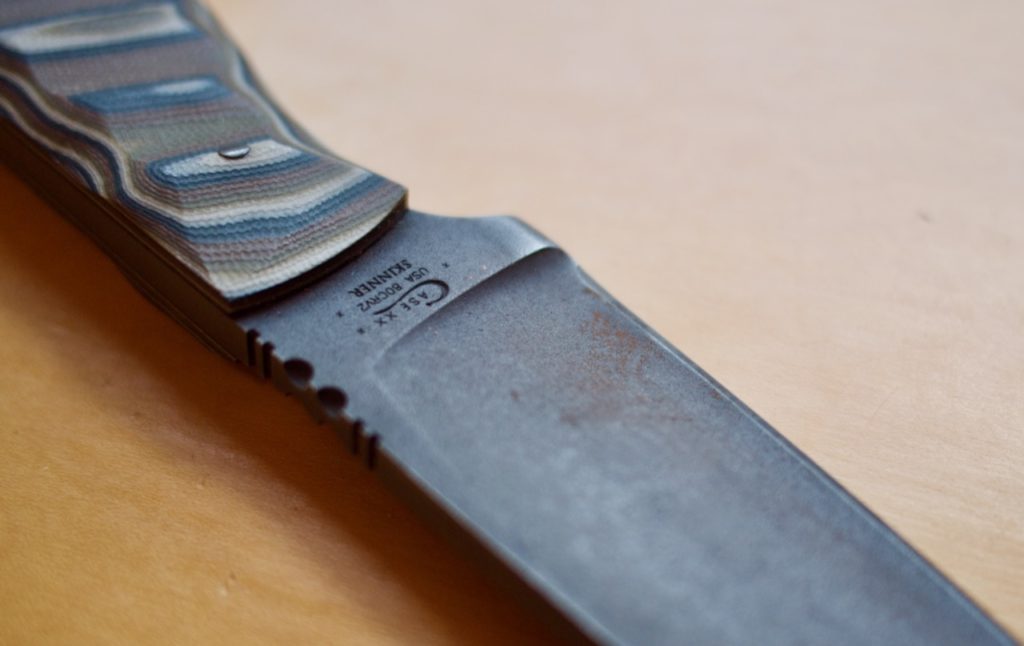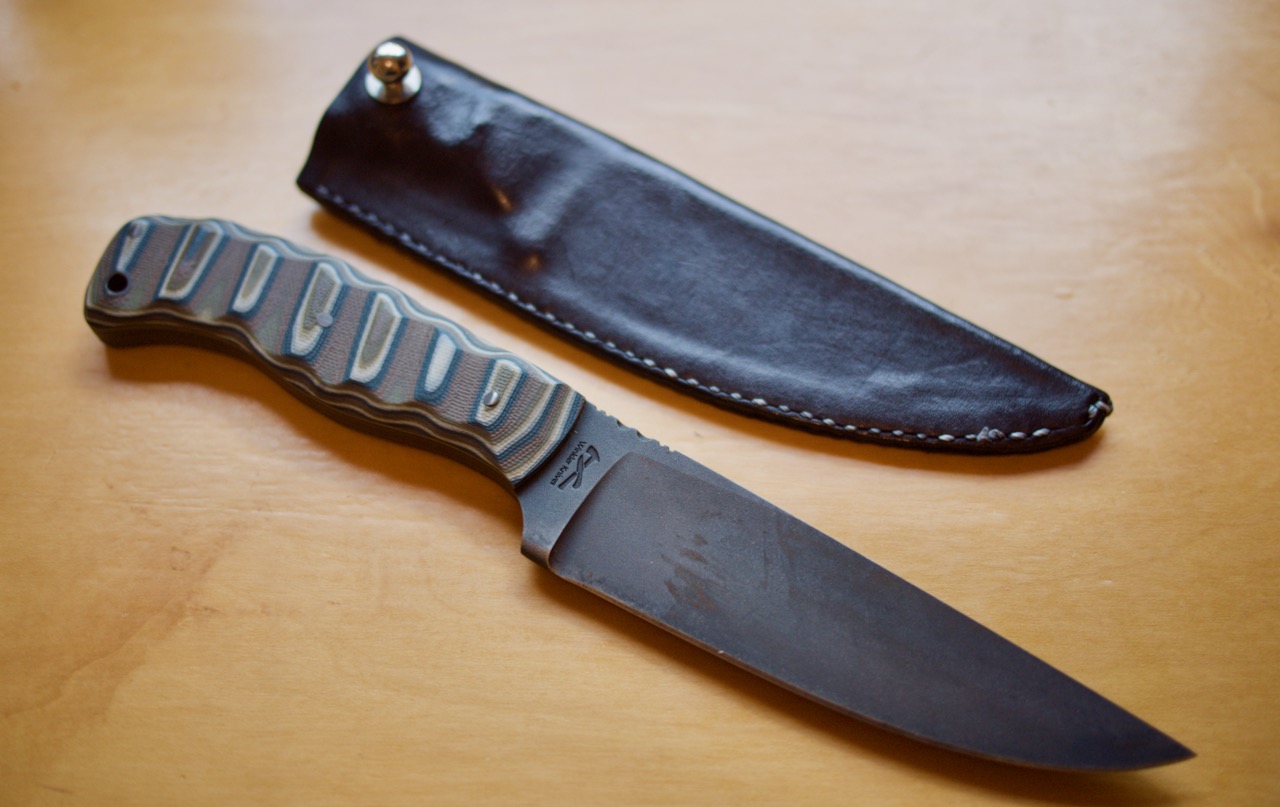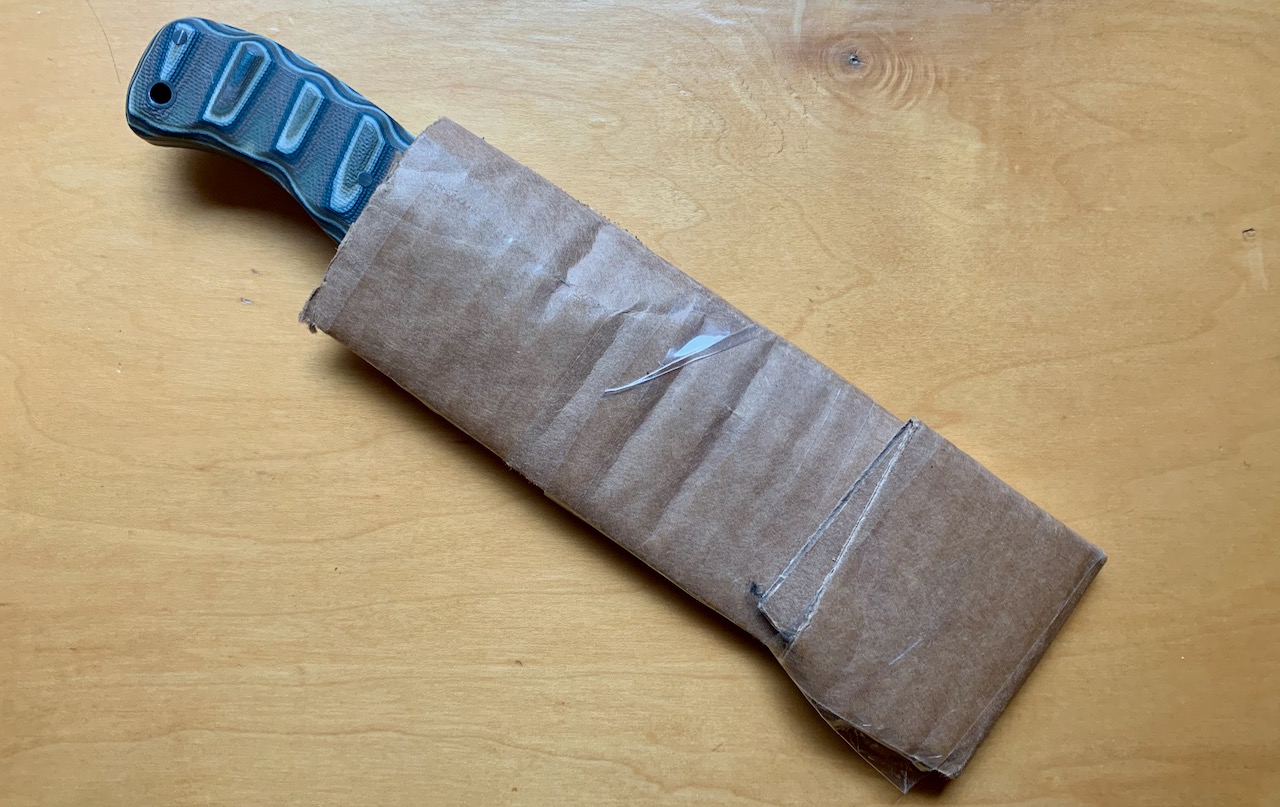Most knife nerds know better than to use a leather sheath for long-term storage. Even if the leather is vegetable tanned and therefore doesn’t have corrosive chemicals in it, it still absorbs moisture and traps it next to the blade.
The picture above is the result of me forgetting my everyday carry (EDC) fixed blade in the console of my vehicle for a few weeks, stored in a leather sheath I’d made for concealed carry purposes. (The peg in this little sheath keeps it from falling down inside my pants, so it’s surprisingly comfortable to wear and easy to conceal.)
I came across this knife yesterday while I was digging in my car for something else. I realized that after running one last day’s worth of errands before lockdown, I had put the knife in the car and left it. I wasn’t surprised to see that the blade had gotten a bit corroded.
If you’re going to store your knife in a go-bag or a vehicle, then you’ll want to do two very easy things to prevent the mess you see above.
First, wipe the blade down with a silicone-impregnated cloth. Silicone is nontoxic, meaning you can safely cut food with a blade that has been coated with it. It’s commonly used in kitchens to prevent corrosion.
Hoppe's No. 9 Silicone Gun And Reel Cloth
Second, make an improvised sheath for it from cardboard and tape. This second step is a very easy, quick measure that knife nuts the world over do with their blades when they’re putting them away in storage. Many custom knives even ship inside pre-made commercial cardboard covers like this. The cardboard is sturdy, safe, and does not trap moisture next to the blade.
Every knife you stash in a go-bag or in any other prep kit should be wiped down and placed in a cardboard sheath like this, no exceptions. You took the time to do your homework and buy a quality field knife, so you can take the extra minute to cut the lip off an Amazon box and tape it around your blade.




You are reporting the comment """ by on